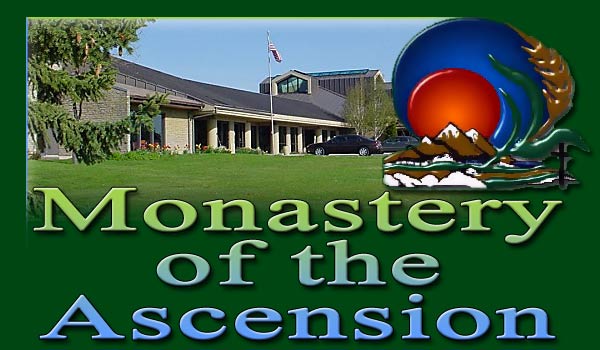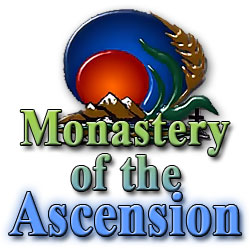Cassian and Monasticism
Fr. Hugh Feiss, OSB
Introduction
St. Benedict was greatly influenced by the monastic writings of Cassian, the Institutes and Conferences, which he recommends to his monks in the last chapter of his Rule. In fact, Cassian had great influence in the Latin West right through the Middle Ages. His teachings on prayer, on the "eight thoughts," and on monastic asceticism were particularly influential. Cassian, in turn, derived much of what he taught from Evagrius, the theologian turned desert monk whose works are being much studied today.1
Life and Personality
We have no life of Cassian, and he is self-effacing in his works. He seems to have been born in Gaul (modern France) or a part of what is today Romania. He never calls himself Cassian and only twice John. He was probably born in the early 360s. His family had a rural estate, the weather was cold there, and there were few monks in the area. He was tutored at home in classical literature. He had a sister who shared his interest in monasticism. His monastic mission was to bring eastern monastic traditions to the West. He was equipped to do this because he was bilingual in Latin and Greek, and he had twenty-five years to obtain first-hand experience of monasticism in the East in Bethlehem, Egypt, and Constantinople. His works were translated into Greek, which indicates the Eastern monks recognized him as one of their one.
Around 380, Cassian went to Palestine with his older friend, Germanus. They arrived at a time when pilgrimages and monasticism were both booming in Palestine. There they became monks. They evidently came slightly before Jerome's arrival in 386 and were not members of his monastery. Cassian later became so enamored of Egyptian monasticism that he seldom drew on his few years of experience in the monastery in Bethlehem. After hearing about Egyptian monasticism, he and Germanus received permission to make a brief visit there.
In fact, he and Germanus were there from about 385 to 399/400. These years were spent in the Nile Delta, Scetis (Wadi al-Natrun), and Kellia, an outpost of Nitria about 40 miles from Scetis. They made various contacts and traveled to various centers and interviewed various monks. Cassian's interest was concentrated on hermits, and he and Germanus made Scetis their monastic headquarters. His reports and Palladius' Lausiac History are precious accounts of this monastic center. Cassian venerated most Abba Moses, a former robber, who had been a disciple of Macarius the Egyptian. Moses, the speaker in Conferences 1-2, sketches the monastic journey to purity of heart and outlines the primary means, discernment of thoughts. Paphnutius, Conference 3, a hermit renowned for humility, was a promoter of Origenism. He and Theodore, another Origenist, were renowned Biblical interpreters, whose insight derived from their purity of heart. This Theodore is probably the same as the Theodore of Conference 6. Cassian doesn't mention Evagrius or other Origenist monks, because after Theophilus of Alexandria condemned Origenism in 399-400 it was not politically expedient. Evagrius was, however, the single most important influence on Cassian's ideas. The monastic life in Nitria and Scetis was devastated by the Origenist conflict, and Cassian and Germanus seem to have left for exile with other Origenist monks. Cassian and Germanus went to Constantinople, and joined the clergy of John Chrysostom. By the time he wrote his two important monastic writings 15 years later, Cassian had become a fairly prominent churchman and monastic expert. Chrysostom was exiled in 403-404, and later Cassian defended his cause in Rome some months later. We don't know where Cassian spent the years 404-415, perhaps in Rome. Sometime early in this period Germanus must have died.
Then Cassian departed for Marseilles to take up monastic life again. The city had many ties with the Greek world. Cassian dedicated his Institutes to a Bishop Castor of nearby Julia Apta, sometime after 419 and completed the Conferences by the middle of the decade. He founded two monasteries, one for men, one for women. The first was dedicated to St. Victor. St. Caesarius later sent his sister to the latter, before becoming leader of a new monastery in Arles. He was very much in touch with the episcopal and monastic establishment in Gaul. The Institutes were meant to guide Castor in establishing a coenobium. Cassian said follow the ways of Egypt, which he will explain, supplementing the teachings of Basil and Jerome. Cassian evidently didn't think much of the existing monastic life in Gaul, which included the work of Martin of Tours and Caesarius. The Institutes are evidently indeed as a counterweight to Sulpicius Severus' Life of Martin and Dialogues, and are an attempt to put order into a movement Cassian regarded as chaotic. He insists on manual labor. Cassian had a higher opinion of and close ties with the monastery on the Island of Lerins, founded by Honoratus.
Cassian became involved in the arguments over Augustine's teaching on grace and free will after 426. His concern was to encourage monastic discipline, but he insisted on the difference between the ascetical means and their theological, and God-given end. Cassian's ideas on the subject are evident in his treatment of chastity and especially in Conference 13, "On Divine Protection," which Prosper of Aquitaine, a hard-line Augustinian, denounced. Cassian's views were later censored, but that was decades after his death. In any case, we have no more information about him after Prosper's treatise Against the Conference, which was written in 432. By that time, Cassian had written a treatise against Nestorius at the request of Leo, who was then archdeacon of Rome. The treatise piles up authorities, and Cassian's Christology is not very profound. But it does show that the aged promoter of monasticism was deeply involved in church life and ministry.
Cassian's immediate influence touched many of those associated with Lerins. Several abridgements of his works appeared. He had great influence on the monastic writings of Caesarius, the Master, and St. Benedict. Gregory the Great's teaching on the seven deadly sins comes from Cassian, as does much of his teaching on compunction and prayer. Cassian's ideas also were influential in the East, through Greek translations. He influenced John Climacus and John of Damascus.
Cassian's Conferences, his most influential monastic writing, purport to be discourses by specific Egyptian abbas who Germanus and Cassian interviewed. The structure is artificial. Cassian is given a synthesis of Egyptian monasticism which he knew and admired, and he provides a literary setting. His immediate goal is to shape monasticism in Gaul, so that monks there, having achieved purity of heart, will attain the kingdom heaven– his ultimate goal.
The Institutes and the first 10 Conferences were conceived as a whole. Then he wrote two supplemental sets of Conferences. The Institutes deal with the basics of monastic life and the origins, causes, and cures of the eight principal faults. The Conferences are directed at the concerns of the inner person striving for perfection. In spite of some statements of Cassian, both works are meant for all monks, cenobitic or anchoritic. Conferences: (1-2) goal of monastic life, discernment; (3) progressive renunciations, perfection, free will; (4) spiritual combat, free will; (5) eight principal faults; (6) trials, free will, perseverance; (7-8) anthropology, free will, temptation, interpretation of the Bible, demons; (9-10) prayer, biblical interpretation, distractions.; (11-13) perfection, love, chastity, patience, grace; (14-15) ascetical and contemplative aspects of monastic life, spiritual interpretation of the Bible, miraculous powers, perfection, humility; (16-17) true friendship, love, patience, anger, promises, intentions; (18) 3 types of monks, patience; (19) cenobites and anchorites, lust; (20) sorrow for sins, forgiveness; (21-23) law and freedom, fasting and chastity, Lent and Easter, grace, impossibility of sinlessness; (24) renunciation, love for others.
Cassian's Theological Vision
The immediate purpose of monastic life is purity of heart, the goal citizenship in heaven and the anticipation, however fleetingly, of that heavenly joy. Monks, indeed all Christians, are situated between here and there. Asceticism, prayer, and everything he views against the backdrop of eternity. His work is profoundly Christological.
Columba Stewart singles out three topics for special emphasis. Purity of heart was a biblical and theological term which involved three strands for Cassian: ascetical purification, love, and inner peace which results from freedom from domination of sin. Contemplation, which unlike asceticism is part of this life and the next, and which constitutes the beatitude of heaven, "feeding on the beauty and knowledge of God alone" (Cf 1.8.3). Spiritual knowledge, contemplation, is nurtured by biblical texts kept close to the heart through meditation and prayer. Cassian wanted to gather scattered intentions and energies into singleness of purpose, contemplation of Christ. There is a continuum of contemplations from sensory knowledge of material things to contemplation of their causes, to spiritual things to the one God. Cassian says hospitality should override ascetical routine. Even the most contemplative of anchorites should entertain visitors. Both asceticism and ministry are aspects of the practical life. Only in heaven will charity and contemplation coalesce. About heaven and heavenly beatitude Cassian is necessarily cryptic. Here below we receive only the earnest money or pledge of heavenly bliss.
Prayer and Ecstatic Contemplation
In Conferences 9.31 Cassian quotes Antony as saying: "It is not perfect prayer when the monks are aware of themselves or even that they are praying." This teaching on ecstasy (in excessu mentis) echoes Evagrius and anticipates much of Western Christian thought on ecstatic contemplation. Cassian often calls this "fiery prayer": the mind can suddenly be "inflamed and set afire, prompted to pure and most fervent prayers" (Conferences 9.26). Because tears often are a mark of ecstatic prayer, Cassian calls these ecstatic moments "compunctions." Cassian combines the Evagrian idea of "imageless prayer" with a more affective strand which suggests the ideas of Pseudo-Macarius. His ideas influenced Benedict and Gregory the Great and Western Christianity ever afterwards. One of his finest descriptions occurs in Conferences 10.11.6: "Our mind arrives at that incorruption of power … that is not concerned with considering any image, and indeed is not distinguished by any accompaniment of voice or words, but with the intention of the mind on fire. [This prayer] is produced through an inexpressible ecstasy of heart, by an unexplainable keenness of spirit, and so the mind altered beyond sense or visible matter pours forth to God with unutterable groans and sighs."According to Cassian there is an encounter with spiritual realities and a sort of God-given fire which bursts the limits of human understanding. He says this ecstatic prayer is keen, exuberant, joyful, inexpressible, imageless, fiery, illumined, rare, and almost always brief. There are many layers of Biblical and philosophical and theological vocabulary behind Cassian's description. Origen, Evagrius, Pseudo-Macarius all are sources of parallels.
In Conferences 9.26-27 Cassian discusses the connections between compunction and fiery prayer. Compunction in Cassian ordinarily means sorrow or repentance as a state of being or a moment of conversion. Here, however, it is used for the sudden exaltation of heart that leads to wordless prayer. Cassian goes on, however, to discuss the spiritual significance of tears. They express both keen sorrow and deep joy. Repentance is an anchor point for spiritual progress, but it is also an experience of grace. Spiritual exaltation always remains rooted in sorrow. Again there are biblical and theological roots for Cassian's teaching. Origen's teaching was very influential, and both Evagrius and Pseudo-Macarius pondered the theme. Cassian teaches that the causes of compunction are sung prayers and psalms, listening to a spiritual elder's conferences, news of a death, recollection of one's own negligence. We feel compunction sometimes in moments of great exhilaration and joy, sometimes in moments of solitary prayer, sometimes in tearful grief. St. Gregory the Great later drew on Cassian to formulate a classical distinction of four kinds of compunction; they concern past sins, future judgment by God, ills of present life, contemplation of heavenly homeland.


